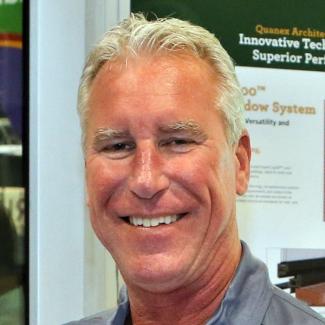How Proven Technologies Can Deliver Futuristic Performance
Increasingly high performance is inevitable, and much of the technology needed to develop high-performing products already exists today
During his first 100 days in office, President Joe Biden has pursued a marked shift in the United States’ climate and sustainability policy. Most recently he announced America would aim to cut its greenhouse gas emissions 50 to 52 percent below 2005 levels by 2030. According to the New York Times, “That’s one of the more aggressive near-term targets among wealthy industrialized nations, although the cuts are arguably not quite as large as what the European Union and Britain have already promised.”
While we’ve not yet seen any specific mandates tied to our industry, approaching these targets will certainly have some impact on the window and door space. It might feel a bit like déjà vu—the Obama administration had pursued goals like these, and window and door makers had prepared themselves for a near-term future where higher and higher U-factor targets would be a requirement. President Trump put a pause on those measures, causing the pendulum to swing in the other direction. And now, perhaps, it’s swinging back.
A few things come to mind as we step into a regulatory environment that could be changing. First, and as I’ve written before, increasingly high performance is a trend driven not by the government, but by consumer demand. Take, for example, Window + Door’s recent outlook on the replacement window market, which cites research finding that “product performance, including durability, low maintenance and energy efficiency, mattered most to homeowners in their window selection.”
Meanwhile, research from the National Fenestration Research Council recently found that two-thirds of buyers said they consider energy efficiency the most important window performance factor, while retailers rank energy efficiency in the top three factors for homeowners buying windows.
Increasingly high performance, then, is an inevitability. Consumers won’t simply start compromising, nor will regulations go meaningfully backward. Developing the high-performance products to meet those demands requires high-performance technology—much of which already exists in some form today.
Back to that déjà vu moment for a minute: Toward the end of the Obama era, ultra-high-performance vinyl framing was beginning to gain traction in the marketplace before stalling during Trump’s term. For example, framing that utilizes cellular foam insulation technology to block thermal conductivity was becoming attractive, as it can be up to six times more efficient than fiberglass, four times more efficient than rigid PVC and three times more efficient than wood. Additionally, cellular foam technology has the dual benefit of mitigating sound transmission through the frame, another performance characteristic that has become increasingly desirable in dense urban areas where outdoor noise can become a nuisance.
While these kinds of vinyl options stalled stateside, they’ve gained market share across Europe, where regulatory pressure never let up. What does this tell us? That high-performance components to meet tomorrow’s thermal efficiency demands are available and have demonstrated real-world durability and longevity that window and door makers can trust.
For U.S. window and door makers today, investing in this kind of technology ahead of the curve could translate to a competitive advantage. Looking ahead and preparing for the future don’t need to be done with apprehension.
Questions or comments? Contact me directly at Eric.Thompson@Quanex.com.



